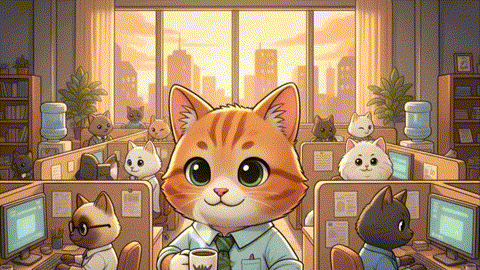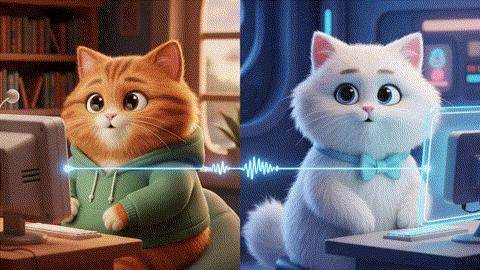Rethinking Email: How Remote Work Changed Everything
Episode 11 explores finding a smarter balance for communication as chat and virtual meetings partially supplant email
Last time we talked about email, most of our advice would have felt right at home ten, maybe even twenty years ago. Email is over 50 years old, so it’s no surprise that the technological frontier hasn’t moved forward all that much.
But a lot of time-tested workplace advice got turned on its head in the last five years. The pandemic and the resulting shift toward hybrid and remote work have impacted email as well. A lot of digital communication has moved out of asynchronous channels like email and into synchronous ones like chat and virtual meetings. Interruptions have become a more natural part of our work, which means they’re now something to manage rather than something to try to avoid.
So while the general techniques for “going through email” that we covered a couple episodes ago are still relevant today, the place email holds in our work lives has changed. Today, we’ll talk about how to navigate expectations around email and when to use email vs. another platform. We’ll explore how synchronicity can substitute for a lack of richness in a communications medium and help teams feel more connected, even when they’re not always together in person. This new reality requires a new set of guidelines and entire suite of tools—like Slack, Teams, and Zoom—that now define our workday.
The Richness of Connection
To understand why the old advice no longer fits, it helps to think about the “richness” of our conversations. A theory called Media Richness Theory explains that in-person communication is incredibly rich. When you talk to someone face-to-face, you get more than just their words. You see their facial expressions, can read their body language, and can hear the tone of their voice, without any lag time. So you have a much better idea whether that one-word response conveys passive agreement or biting contempt.
Email and chat, on the other hand, are much “leaner” channels. They strip away most of that non-verbal context, leaving only disembodied text on a screen. In an in-person office, where rich conversations happen spontaneously in the hallway, communicating via chat messages can feel like noisy, interrupting, contextless distraction.
As the CEO of an in-person company, I despised the proliferation of Slack DMs, feeling like they were the absolute worst of all worlds. The interruptions gashed productivity, there was no record of decisions outside of the private history of the participants, and the conversations we had there yielded less creativity and worse ideas than the ones we had when we took advantage of physical proximity to communicate in a richer medium.
But when teams went remote, conversation moved out of DMs and into channels, and those channels became lifelines. Suddenly, synchronous chat and frequent video calls became the primary ways to foster team cohesion. Research from the University of Mannheim found that for virtual teams, more synchronous communication led to a stronger sense of togetherness. Email, being asynchronous, had no impact at all on how connected teammates felt.
In 2025, “if you aren’t going to meet in person, use email,” is bad advice. Because they’re more synchronous than email, chat apps are now a richer default channel of communication rather than sitting in the uncanny valley of productivity. They’ve also replaced the water cooler, with custom emojis and casual conversations helping build culture from afar.
Why Veteran Teams Thrived (and New Hires Struggled)
Media richness theory was introduced almost 40 years ago. More recent research on communication channels gives us more insight into why chat and virtual meetings are now extremely valuable for collaboration.
The initial transition to remote work was surprisingly seamless for us. Despite a few hiccups, we kept shipping features, improving our products, and kept the lights on virtually. That was true for a surprising number of established teams.
The reason for this lies in a concept called Channel Expansion Theory. In short, the longer a team has worked together, the better they know each other. This shared history and understanding allow them to “expand” a lean channel like email or Slack, filling in the missing context.
When you read an email from a long-time colleague, you can almost hear it read in their voice. You can picture their expression as they wrote it. You’re mentally filling in the gaps because you have a rich, pre-existing relationship. This is why many teams felt they didn’t miss a beat. They were running on social capital built up over years of in-person interaction.
However, this has created a hidden challenge for new employees hired into a remote environment. Without that shared history, they can’t perform the same mental gap-filling. For them, a short Slack message is just a short Slack message, devoid of the rich context their longer-tenured colleagues automatically supply.
This makes it harder for them to integrate, build relationships, and feel like part of the team. And it also makes on-the-job learning harder and slower. Bridging this gap requires conscious effort, like scheduling more one-on-one work sessions and creating intentional opportunities for connection.
A New Look at Interruptions
Just as our view of communication channels has changed, so has our relationship with interruptions. For years, research painted a grim picture: interruptions increase stress, lower your effective IQ, and can even cause “email apnea“—a completely wild phenomenon where people unconsciously hold their breath while reading messages, depriving their brains of oxygen.
The consensus was that interruptions were always bad. If you’d asked me in 2018 how you should check email (and chat too!), I would have told you that you should pause your Inbox and turn off chat notifications. Check each one to three times a day, and otherwise spend your time trying to enter flow state and do focused work.
Post-pandemic, however, surveys reveal a more nuanced story. Many people now report that being responsive increases their job satisfaction and makes them feel more productive. In a remote setting, responding in a timely manner is a way to feel less isolated and more connected to the team. It replaces some of the lost richness with valuable synchronicity.
This doesn’t mean the pendulum has swung all the way to celebrating constant interruptions. Burnout among remote workers is significantly higher, largely due to the collapse of work-life boundaries. The key isn’t to be “always on,” but to understand that not all interruptions are created equal.
Research conducted at Microsoft highlights an important distinction:
External Interruptions are the most costly. These are the unexpected pings and pop-up notifications that pull you out of a task without warning. Because you weren’t prepared, re-engaging with your original work requires a significant mental effort to recall where you were and what you were doing next.
Self-Interruptions are far less disruptive. This is when you consciously decide to switch tasks, like finishing a paragraph and then choosing to check your email. When we self-interrupt, we naturally do it at a logical stopping point. We also subconsciously “save our state” by making a mental note of what to do when we return.
The takeaway is clear: taking control of how and when you’re interrupted is crucial for protecting your focus.
Tip of the Week: Go Bimodal
To thrive in today’s work environment, the best approach is to adopt a bimodal schedule. Instead of being completely asynchronous or constantly available, you strategically separate your time into two distinct modes.
Mode 1: On and Responsive (During Work Hours). During your core work hours, aim to be more responsive. Check your email and chat more frequently. Don’t turn on all your notifications—that invites a constant stream of external interruptions, which are still costly. Instead, practice disciplined self-interruption by choosing when to check in. This allows you to stay in sync with your team and feel connected without sacrificing control of your focus. It’s also important to set explicit team expectations around responsiveness during these hours.
Mode 2: Off and Unreachable (After Hours). To prevent burnout and all the other awful effects of constantly being on, it’s important to be truly off sometimes too. Protect your personal time. Use tools like our Inbox Pause feature to schedule your email to stop arriving after a certain time (say, 6 PM) and resume the next morning. It may take a few days for your brain to unwire its compulsive need to check for new messages, but breaking the habit creates a clear separation between work and life.
By being intentionally responsive when you’re on and intentionally disconnected when you’re off, you get the best of both worlds: strong team cohesion and the protected downtime you need to recharge.
To learn more, listen to the full podcast episode.





